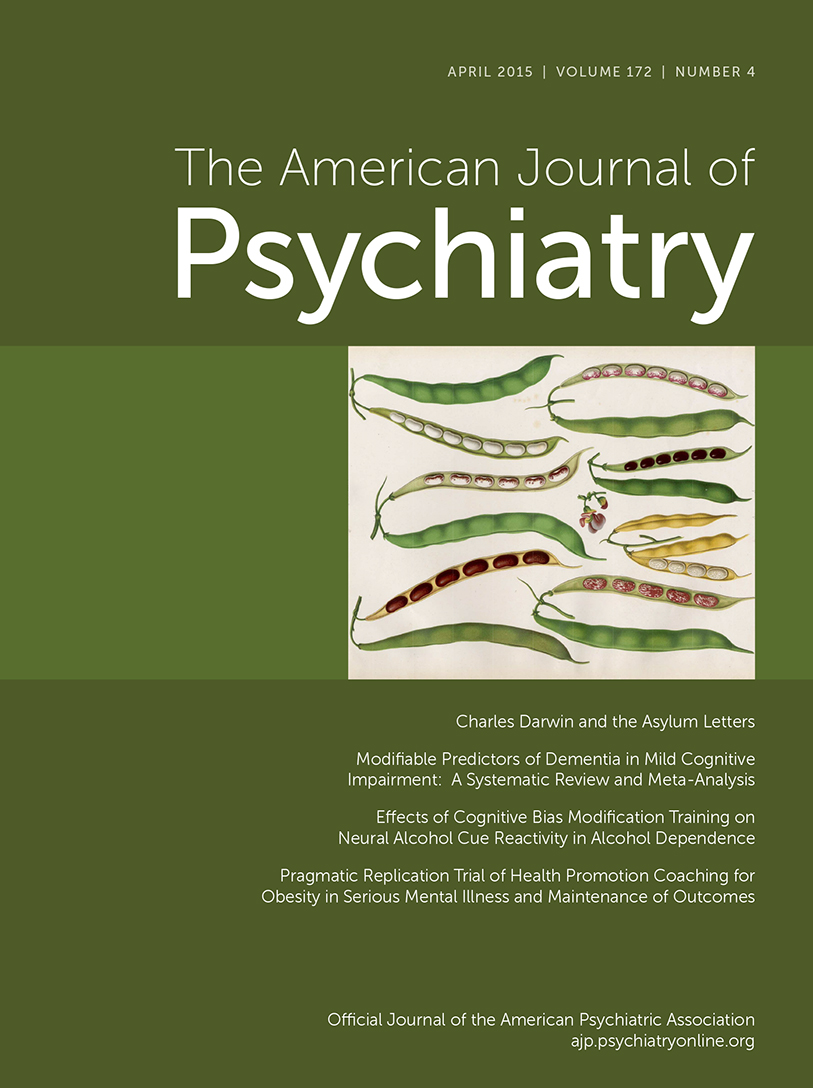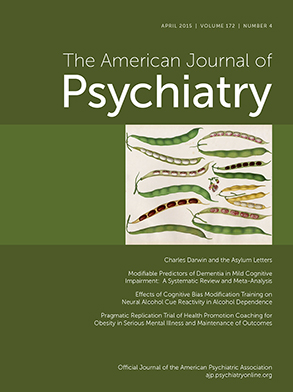Neuroplasticity is the ability of the brain to change and adapt in response to changes in its input, by an alteration in the number of neurons or glia via cell division or apoptosis, by formation of new circuits, by strengthening or weakening specific synapses, by changing the number of dendritic spines, and/or by other mechanisms (
1–
3). In this issue, Li et al. (
4) provide new evidence for altered neuroplasticity in schizophrenia. They found an increase in synaptic protein markers and synaptic spines in the CA3 hippocampal subregion in postmortem brain samples from subjects with schizophrenia (N=21) and comparison subjects (N=21). While converging evidence generally implicates abnormalities of the hippocampus in schizophrenia, this work stands apart from other Western blot studies because of the authors’ use of techniques permitting assessment of specific subregions of the hippocampus, rather than the whole region as a blended postmortem sample or a (relatively) large imaging voxel (
5–
7).
Using Western blot analyses, the authors found increased expression of postsynaptic density protein 95 (PSD95) and GluN2B-containing
N-methyl-
d-aspartate (NMDA) receptors. PSD95 is a multipotent scaffolding protein that helps form specialized protein microdomains containing NMDA subtype glutamate receptors in postsynaptic neurons (
8). NMDA receptors are complex ligand-gated ion channels that contain an intrachannel phencyclidine (PCP) binding site, which facilitates the psychotomimetic effects of PCP (
9). These proteins facilitate molecular correlates of learning and memory, including long-term potentiation (
2). Classic long-term potentiation requires co-localization of α-amino-3-hydroxy-5-methyl-4-isoxazolepropionic acid (AMPA) subtype glutamate receptors with NMDA receptors (
2). Interestingly, the authors did not find changes in AMPA receptor subunit protein expression in the CA3 region, suggesting that there may be a specific increase in “silent” synapses containing only NMDA receptors. The authors also did not find changes in glutamic acid decarboxylase 67 (GAD67), a marker of neurons that form inhibitory synapses, suggesting that their findings are limited to excitatory glutamatergic synapses.
The authors next tested the hypothesis of an increase in excitatory synapses in the CA3 subfield using Golgi staining, a method that permits quantification of dendritic spines and other structures associated with synapse formation. These studies demonstrated an increase in CA3 spine density in schizophrenia, localized to the stratum radiatum, as well as an increase in thorny excrescences, which are associated with input to this region via specialized unmyelinated mossy fibers that originate from a different hippocampal subfield, the dentate gyrus. There were no changes in Golgi-stained structures in other parts of CA3, suggesting a complex pathophysiology where specific anatomical compartments of hippocampal subfields could be altered in relation to the pattern of afferent inputs (
5). Supporting this hypothesis, other studies have found changes in presynaptic markers in the hippocampus and its interconnected cortical regions in schizophrenia (
10,
11).
The authors’ data suggest a selective abnormality in excitatory neurotransmission involving increased expression of GluN2B-containing NMDA receptor signaling complexes. Such a change would likely be accompanied by alterations in associated signaling pathways. However, the authors did not find changes in various signaling molecules, including CREB, phosphoCREB, ERK1, ERK2, or RAC1 protein levels, in the CA3 region in schizophrenia. These negative results do not preclude an underlying signal transduction deficit, as there may be changes in kinase activity that affect intracellular signaling networks without an alteration in protein or phospho-protein levels (
12). A number of studies have found alterations in substrates that facilitate signaling from excitatory synapses in schizophrenia, but none of these studies examined the hippocampus in postmortem brain (
12).
The authors propose that increased excitatory synaptic function in the CA3 subfield underlies the declarative memory deficits associated with schizophrenia, possibly resulting in pathological hyperassociation and generation of false memories with psychotic content. The hypothesis that changes in CA3 synapses are part of a common pathophysiology is consistent with well-established neuropsychological deficits observed in the illness, including abnormalities of declarative memory, a type of memory related to the conscious recall of facts and events (
13).
What is remarkable about the Li et al. study is the consistent pattern of findings across all subjects with the illness. The study examined postmortem brain tissues in subjects with chronic schizophrenia well after the formal onset of the illness (the mean age at death was about 52 years), suggesting that the observed changes are part of a pathophysiological process that may be common to the schizophrenia syndrome, despite the (likely) broad diversity of genetic risk in the subjects. The recent findings from the Schizophrenia Working Group of the Psychiatric Genomics Consortium suggest that genetic risk for schizophrenia is multifactorial (
14). Another group recently proposed eight or more distinct subtypes of schizophrenia (
15). Considering schizophrenia as a disorder of neuroplasticity, with a common chronic pathophysiology, permits integration of diverse findings and observations (
16). For example, miswiring of brain circuitry during development could be secondary to genetic risk, neurotoxic events, and/or inflammatory processes. Sequelae of abnormal development could yield increased susceptibility to external environmental stressors, such as drug use or sleep deprivation, leading to development of a severe mental illness phenotype, with alterations in neuroplastic markers such as glutamate receptor expression and spine density. The scientific challenge is to connect the genetic and developmental risk substrates to this putative common pathophysiology with specific biological mechanisms. It seems likely that the diverse genetic and environmental risk factors that “break” the brain in this illness do so by disrupting convergent biological processes that underlie neuroplasticity.
Finally, the Li et al. study highlights the unique challenges of working with the postmortem substrate. Postmortem studies use samples from subjects with a lifetime of psychiatric illness and its associated stress, as well as (in most cases) chronic treatment with psychotropic medications. Variability in postmortem interval and other factors, such as tissue pH, creates additional technical challenges. In this study, these factors were assessed statistically and were not found to have an impact on the primary findings of the study. However, the presence of these factors raises the question, What is the best way to study a complex mental illness? Postmortem studies do not capture the illness at its onset, as brains from afflicted subjects are typically collected years or even decades after onset of the illness. Animal models may not fully recapitulate this arguably uniquely human condition; for example, locomotor hyperactivity in rodents is often used as a proxy for psychosis, but it does not capture the full complexity of auditory hallucinations or delusions in humans. Cell culture studies using induced pluripotent stem cells cannot fully capture the complex connectivity found in the brain in vivo. Despite its limitations, the postmortem approach has a direct translational nature that is difficult to replicate in animal or cell culture models. The Li et al. study nicely illustrates this point, as the data reported here begin to illuminate putative common pathophysiological pathways in schizophrenia that may lead to identification of new substrates for drug discovery.
The senior author of this article, Dr. Carol Tamminga, warrants special acknowledgment. Dr. Tamminga’s contributions to the field are not limited to her work studying the illness. For the past 28 years, Dr. Tamminga has been a Founding Director, with Dr. Charles Schulz, of the International Congress on Schizophrenia Research (ICOSR), the preeminent society focused on the study, diagnosis, and treatment of schizophrenia spectrum disorders. Their leadership and vision have fostered the dynamic environment encountered at the ICOSR annual meeting and inspired a generation of scientists, advocates, and those afflicted with the disorder to strive for new treatments, diagnostics, and a deeper understanding of the pathophysiology of this often devastating illness.

